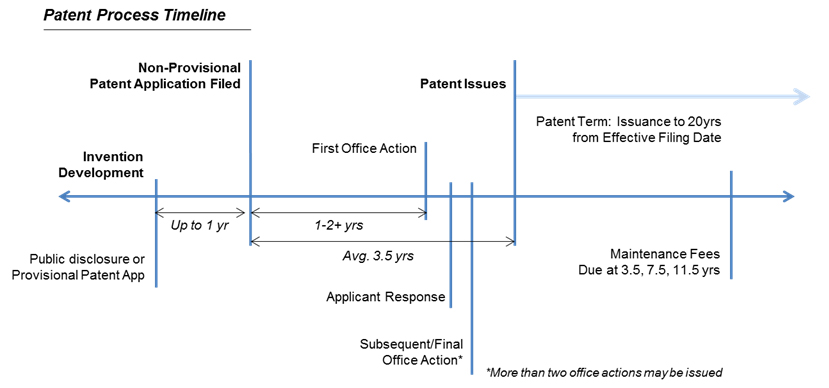How the Patent Process Works
A patent gives the holder exclusive rights to ‘practice’ (make, use or sell) an invention. In exchange for these rights, the inventor must make a complete public disclosure of the invention. The patent application must therefore clearly state how to make and/or use the invention in terms that can be understood by someone familiar with the relevant technical field.
Application Requirements
A utility patent application is the most common application type; others are design and plant patent applications. (A provisional patent application is a special type of utility application). Utility applications include a written description of the invention, drawings, and claims. The claims specifically define the features of the invention for which patent rights are being sought.
As a patent agent, I work very closely with the inventor(s) to draft claims, prepare drawings, write a thorough description, and prepare all required pre-filing forms.

Steps in the Patent Process
The timeline above shows the general process for a utility application for a patentable invention; not all applications result in a patent and the process for each may vary from this example. After the application is filed, it goes into an examination queue at the USPTO. It may be 18-24 months or more until the examination is begun.
After initial examination, the applicant will receive an Office Action that rejects or allows each claim. Claims may be rejected due to lack of novelty (a prior art reference discloses all the claimed features) or obviousness (one or more references could be modified or combined in an obvious way to arrive at the invention). The applicant is given opportunity to respond. This process may be repeated several times until the application is allowed or given final rejection.
Patent Allowed
If the application is allowed and the applicant pays the issue fee, a patent will be granted by the USPTO. The patent is effective beginning on the day of issue and generally extends until 20 years from the date of filing the application. Maintenance fees are due three times over the life of the patent, and are required to keep the patent rights in force.
